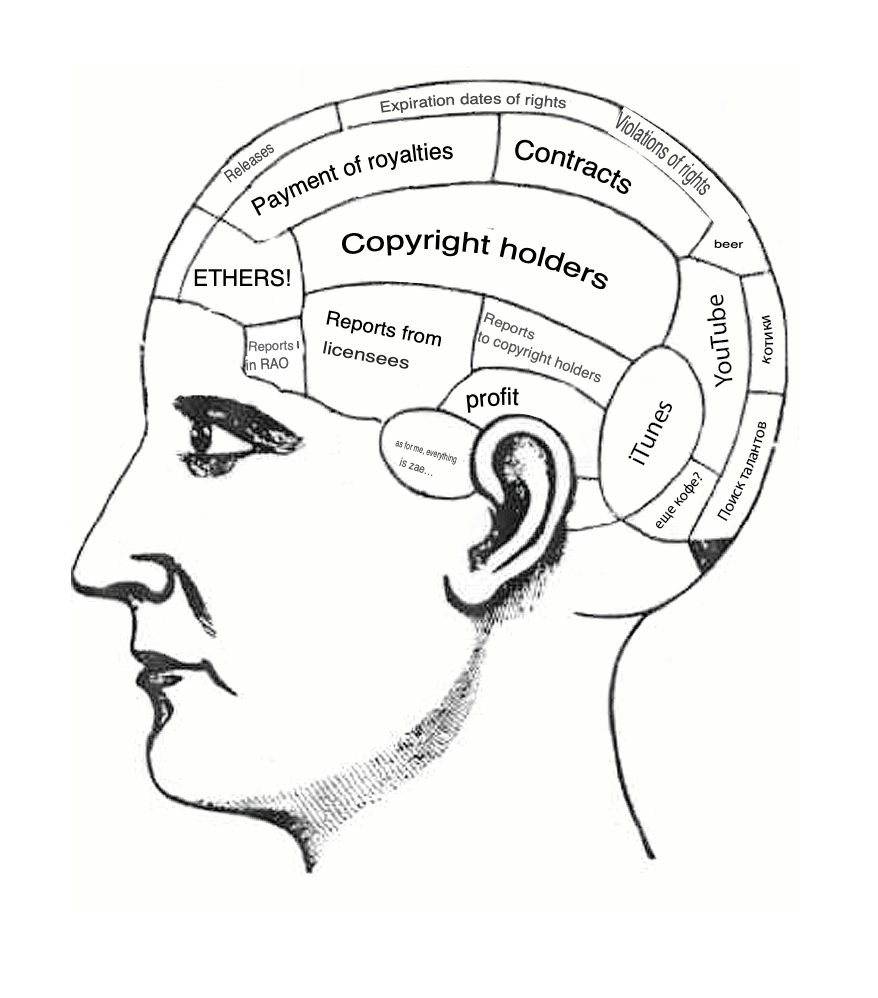Building an Intellectual Property Corporate Registry using MediaRights Revolution.
- Vadim Bondarev
- Sep 11, 2023
- 3 min read

In media companies involved in the production or resale of intellectual property - whether it's music, text, or audiovisual works - one fact holds true: such companies rely heavily on a few employees who possess comprehensive knowledge of their market and the products they create or sell.
When such an employee decides to move on, their knowledge goes with them. How can you protect yourself from this situation and always have answers to questions about your company's rights to media products?
There's also a deeper question - sales history, financial terms, contacts, and reports
MediaRights Revolution helps address both questions, but let's start with the first one
As you understand, even the most talented media manager can't keep all the information in their head. Sooner or later, information moves to phones and computers. Excel is often used to store work-related information. Many large companies still rely on Excel for data storage and find it convenient.
We've identified criteria that a rights registry should meet to ensure that employees and company owners feel secure and comfortable, and can access the necessary information quickly and easily.
Information about intellectual property objects (metadata):
Title
Alternative names - for different countries
Description
Producer name
Country of production
Rights holder (for large media companies with multiple legal entities, this refers to the rights holder of licensing rights in the system)
Production date (can you guess why?)
Type of media content (music, audiovisual work, text, etc.)
Category (used for quick sorting, such as genre, audience, purpose. Can be designated as tags)
Contributors - also important for searching, and here you need to list everyone involved in creating the work - artists, actors, directors.
Country certificates
Releases
Various codes: ISRC, ISWC, UPC, etc...
It is a very limited number of data fields, but you can imagine how large the Excel table would be with this data.
Afterward, when you integrate your information system with other company resources, these fields will come in handy.
Let's take a look at what an object card in MediaRights Revolution (MR2) looks like:

Information about copyright and neighboring rights
If your company is involved in music production or distribution, it's crucial to maintain data on copyright and neighboring rights for musical compositions. With this data, you can calculate royalties and neighboring rights payments. In the music industry, copyright can be divided into music and lyrics, while neighboring rights encompass performer rights and producer rights. Additionally, for each type of right, there's an option to split income among multiple co-authors and/or producers. By default (unless the music composer and lyricist have agreed otherwise), income from copyright is typically split 50/50, as is the case with neighboring rights income. Furthermore, income division among multiple co-authors is also possible.
So, what does this mean? It means that every musical composition should have the following fields:
Authoring rights
Music rights - % shares
Co-author 1 - % share of 100% rights to music
Co-author 2 - % share of 100% rights to music, etc...
Text rights - % shares
Co-author 1 - % share of 100% rights to text (lyric)
Co-author 2 - % share of 100% rights to text (lyric), etc...
Neighboring rights
Performer Rights - % shares
Co-performer 1 - % share of 100% rights to performance
Co-performer 2 - % share of 100% rights to performance, etc
Sound Recording Rights - % shares
Recoriding co-owner (music label) 1 - % share of 100% rights to recording
Recoriding co-owner (music label) 1 - % share of 100% rights to recording, etc...
But this is when we talk about managing rights under European practice of authoring and neighboring rights. In global practice, each right type is further related to using rights types: into Mechanical Rights - these are rights related to reproduction and distribution, and Performance Rights - rights to public performance: radio stations, bars, cafes, and services like Pandora. International law implies that such types of rights can belong to different rights holders, and each of them can exercise this right without the knowledge of the other rights holders. While the Civil Code tells us that the consent of all rights holders is required for the use of the object.
Of course, we are only talking about property rights now. There is also the right of authorship, which is not involved in business. So, to conclude licensing agreements and calculate payments under them, you first need to describe the objects with which licensing transactions will be made.





Comments